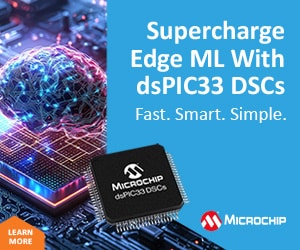Are you ready for a ‘technically challenging’ career? If yes, get ready for something beyond the preliminary levels of integrated circuits (ICs) involving small-scale integration (like logic gates) or medium-scale integration (like multiplexers and parity encoders). A much bigger world involving miniaturisation at levels where even a micrometre or a microsecond is considered a huge measure is waiting for you! This is the world of very large-scale integration (VLSI).
“Programmable logic devices, hardware description languages and design tools of today have changed the circuit design process to such an extent that it has become totally independent of the actual device manufacturing issues,” says Dr S. Karthik, engineering director, India Product Development Centre (IPDC), Analog Devices India. Let’s figure out the possibilities and the opportunities in the VLSI field for professionals with subject-matter expertise in electronics.
Why VLSI?
In the present scenario, the outsourcing aspect of VLSI design is attracting major international players in this field to India. In fact, most of the top global players in VLSI have their R&D setups in India playing very pivotal role in driving their overall strategy.
Moreover, the electronics industry in India is undergoing a gradual but rapid change from a software-driven outsourcing model to one that is increasingly focused on growth and development of the domestic market. According to India Semiconductor Association (ISA), the Indian semiconductor and embedded design industry is expected to earn revenues of $43 billion in 2015—a marked increase from the $5.9 billion in 2009. VLSI design services contribute approximately 13 per cent to overall revenues and 11 per cent to the overall workforce of the industry.
“Even in the recent downturn many companies did not cut the R&D spends. In fact, they are focused now, more than ever, on investing time and resources in creating the new applications for the wide varieties of market. Certain skill sets in this arena are always likely to be in short supply and therefore in great demand. So there is not only a need for talent in the semiconductor and electronics design industry but also a tremendous scope for growth for those who choose this path as a career,” says Surinder Bhagat, country manager-HR, Freescale Semiconductor India.
[stextbox id=”info”]
There is not only a need for talent in the semiconductor and electronics design industry but also a tremendous scope for growth for those who choose this path as a career.
also a tremendous scope for growth for those who choose this path as a career.
—Surinder Bhagat, Country Manager-HR, Freescale Semiconductor India
[/stextbox]
Major recruiters in this field are Texas Instruments, PMC Sierra, Infineon, Alliance Semi- conductor, Freescale Semi- conductor, Analog Devices, Cadence, Synopsys, Mentor Graphics, HCL, Intel, Lucent, Micron Tech, National Semiconductor, Motorola, Philips Semiconductor, Qualcomm, Sasken, Atrenta, Conexant, Moschip, Cradle Tech, Syplicity, Wipro, TCS and eInfochips. There is also a very huge pool of SMEs with a headcount anywhere between 5 and 200 that is playing a pivotal role both in talent acquisition and development.
What role to choose?
Most of the jobs available in this field can be put under three broad categories: design, verification and implementation. Though most of the entry-level job profiles involve code entry, verification, synthesis and system-level engineering, the possibility of role diversification moving ahead is huge. The main job function involves engineering aspects of design, product, test, applications and process. Product engineering and test engineering functions are often combined efficiently into one role because of the interdependency and overlap of skills and tasks.
The roles are defined depending on the requirements of the job. “Typically, a design engineer takes specifications, defines architecture, designs circuits, runs simulations, supervises layout, tapes out the chip to the foundry and evaluates the prototype once the chip comes back from the factory,” says Anil Singh, director-training, CETPA Infotech. The design role itself offers further classification. For example, when the marketing team gives a company the product to design for the market, the architecture team is responsible for defining the chip design. You may work in such a team as a chip architect. You may also be involved in designing the functions or modules of the chip that are required to perform the well-defined tasks described by the architecture team. This role is defined as RTL designer. RTL design is written in a high-level logic description language such as Verilog or VHDL.
On the other hand, as a physical designer, your responsibilities will include placement and routing of digital blocks and chip-level integration. You have to take the netlist and perform a layout of the chip. This layout can be used to produce ‘masks,’ which are then used to manufacture the chip on a silicon wafer.
If you have interest in optimisation of circuit design or layout of custom cells like adders and shifters, you may start as a circuit designer.







